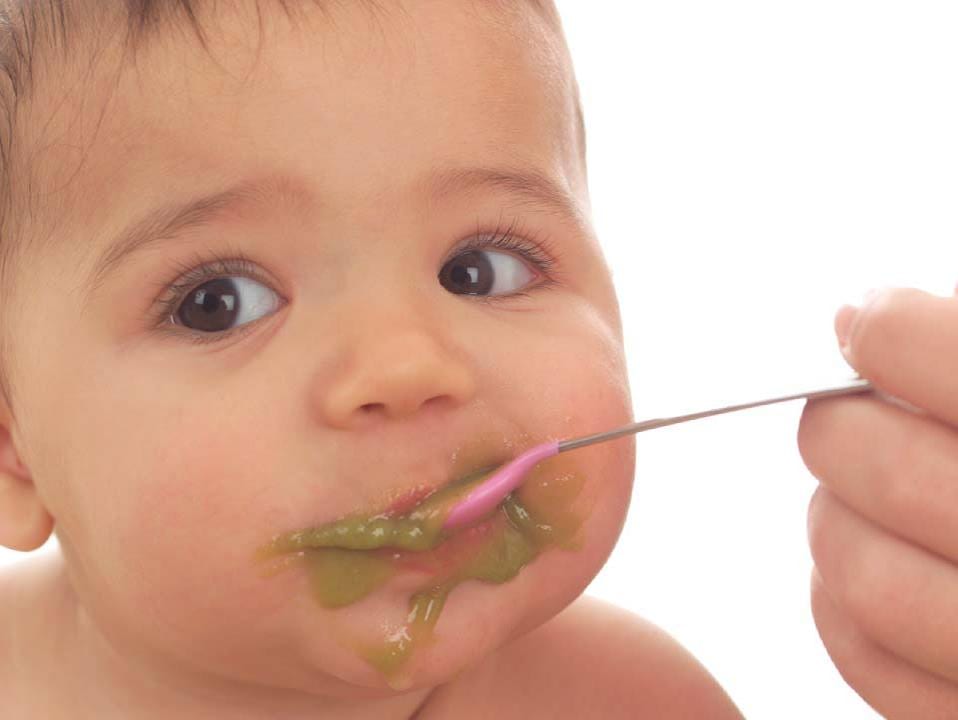Introducing solid food to your baby is a huge step. Take some time to make sure you and baby are prepared before beginning the process. Keep in mind that every child takes to solid foods differently, so don’t push. Just relax and be sure to have the video camera ready to capture baby’s first bites.
Introducing solid food to your baby is a huge step. Take some time to make sure you and baby are prepared before beginning the process. Keep in mind that every child takes to solid foods differently, so don’t push. Just relax and be sure to have the video camera ready to capture baby’s first bites.
Step 1
Assess your child’s readiness for solid food. Most pediatricians recommend that parents wait to start solid foods until your baby is showing signs of readiness, which include good head control, increasing appetite and the loss of a reflex that causes young babies to put objects out of their mouths. Other signs of readiness for solid foods include grabbing at solid foods while another individual is eating, sitting up well and exhibiting chewing motions. The American Academy of Pediatrics says that babies do not anything besides formula or breast milk until they are 6 months of age. Be sure to talk to your doctor about when he recommends trying solid foods.
Step 2
Start with rice cereal for baby’s first feeding. Experts agree that rice cereal is easiest on baby’s sensitive stomach. Mix breast milk or formula with the rice cereal, following the recipe on the box. The rice cereal should be mushy, but not runny. For the first feeding, don’t worry about how much baby actually consumes. Just enjoy and take lots of pictures.
Step 3
Start a schedule. Continue feeding your baby rice cereal at the same time for at least 5 days. This makes it part of his or her routine. It also allows baby’s stomach to become accustomed to the cereal before you add any other types of food. Slowly increase the amount of food in her bowl. But again, don’t worry too much about how much is actually eaten. Each child has a different appetite.
Step 4
Add different foods. After you are certain that baby’s body is handling the rice cereal well, start adding different foods. Most experts recommend moving on to oatmeal cereal before starting other baby foods. Then try adding vegetables or fruits to your baby’s diet. You can add the fruit or vegetable to the rice cereal, or you can simply spoon it up alone. When you start a new food, wait five days before beginning another. If your baby has any food allergies, this will allow to easily determine the culprit of the allergic reaction. When it comes to adding foods, there no right or wrong way to proceed. Some experts advise parents to start with vegetables and then progress to fruits. Other experts say that parents should start with banana, because it tastes like breast milk. Ask your pediatrician for guidance regarding a schedule of foods to add.
Step 5
Prepare your baby’s food at home for savings and convenience. Instead of purchasing jarred sweet potato, just bake a sweet potato and stick it in the food processor. You can follow the same method with almost every fruit and vegetable. The link listed in the Resources section provides some great recipe ideas.
Step 6
Be ready. Parents introducing solids can expect some changes in their baby’s elimination habits. You might see harder, smelly stools. If your baby becomes constipated or seems to have painful gas, contact your pediatrician. He may recommend cutting back on certain foods.
Warnings
- There are several foods that experts agree are not safe for your baby. Honey can contains spores of a specific bacteria that is deadly for children under age two. Parents should also avoid giving a child under age one any peanut butter. Not only can peanut butter be a choking hazard, but some studies suggest that early exposure to peanut butter can increase a child’s likelihood of developing food allergies. Cow’s milk should also be avoided before age one. Cow’s milk is difficult to digest and allowing your baby to drink cow’s milk can damage his kidneys. Talk to your doctor before offering your baby cow’s milk.
- Always use common sense when it comes to introducing new foods. Foods like grapes, for example, should always be diced. For children under age one, experts recommend that food pieces be no larger than a pea. Also remember that sticky or hard food can become a choking hazard, regardless of size.





